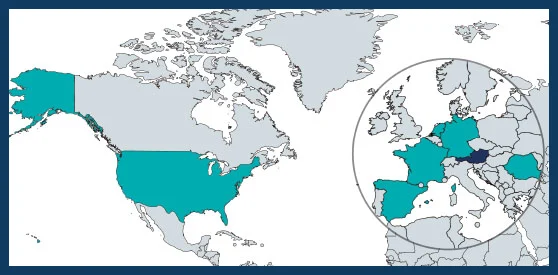01-2019 to 03-2022
€ 1,510,834
Silvia Winter
Silvia.winter@boku.ac.at
University of Natural Resources and Life Sciences, Vienna, AUSTRIA
Institut National de la Recherche Agronomique (INRA), Villenave-d’Ornon, FRANCE
Julius Kühn-Institute, Federal Research Centre for Cultivated Plants, Siebeldingen, GERMANY
Institute for Environmental Sciences, University of Koblenz-Landau, GERMANY
Department of Agricultural Economics and Rural Development, University of Göttingen, GERMANY
Faculty of Geo-Information Science and Earth Observation, University of Twente, Enschede, THE NETHERLANDS
University of Agricultural Science and Veterinary Medicine, Cluj-Napoca, ROMANIA
Agencia Estatal Consejo Superior de Investigaciones Científicas, Granada, SPAIN
Department of Wildlife, Fish, and Conservation Biology, University of California, Davis, USA

In agro-ecosystems, multiple ecosystem services such as crop production, soil fertility conservation and pest regulation need to be balanced to achieve both sustainable development and biodiversity targets. The main global change drivers of biodiversity and ecosystem services in viticultural landscapes are climate change, the invasion of alien (pest) species and land management changes. These drivers influence agricultural policies and land use decisions at the local and regional level which affects multiple dimensions of biodiversity and the delivery of ecosystem services.
SECBIVIT will develop locally adapted agent-based models based on existing data, surveys in commercial vineyards and stakeholder-driven scenarios for viticultural regions from Spain, France, Germany, Austria and Romania. The scenarios will integrate winegrowers as agents who take land use decisions. The effects of those land use decisions on multiple ecosystem services and biodiversity will be quantified for identifying potential trade-offs and synergies between grape production and other ecosystem services.
SECBIVIT will organise local workshops to develop stakeholder-driven scenarios which will be used as input for the agent-based models. Existing knowledge from different European countries will be used to build a predictive model for the delivery of ecosystem services by biodiversity in viticulture. This model will be validated using independent field measurements of above- and below-ground biodiversity as well as multiple ecosystem services along gradients of landscape complexity and local management options across five European regions.
The stakeholder-driven scenario development and modelling will link scientific knowledge with decision criteria by stakeholders. In meetings organised in the study regions, SECBIVIT will capture the opinions and societal points of view on different land use practices in vineyards and farmers’ attitudes towards sustainable management considering biodiversity and ecosystem services under different scenarios. The results will contribute to the production of policy briefs enhancing knowledge transfer and identifying policy recommendations.